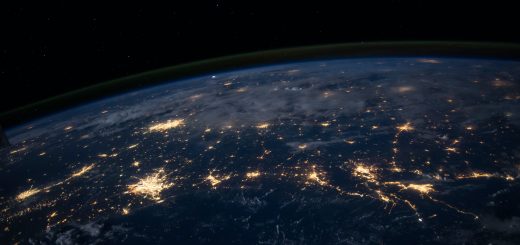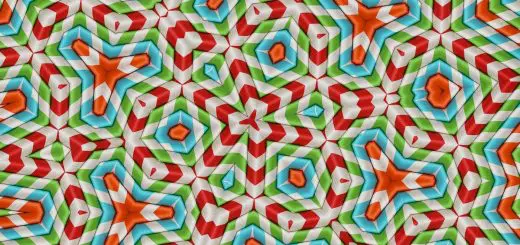Top Sustainable Food Packaging Trends for 2025

Looking for more amazing products? Check out our online store and explore our collection here! Happy shopping!
Before diving in, please note: This post is for informational purposes only. If you’d like to know more about how we approach topics, feel free to check out our friendly Disclaimer Page.
Hey there, amazing readers! 
We’re committed to delivering quality posts, and your support (even just sticking around despite the ads) means everything to us. So, bear with us, and thanks for helping us keep the good vibes rolling. Now, on to the fun stuff!
TRANSLATE BUTTON AT THE END OF THE ARTICLE
A Quick Overview
As we stride into the future, sustainability is becoming more than just a buzzword; it’s transforming the way we think about food packaging.
With 2025 just around the corner, innovative trends are poised to reshape our food experiences.
From biodegradable materials to edible packaging, there’s a buzz of excitement around what’s coming.
Let’s dive into the top sustainable food packaging trends that are set to take center stage in 2025!
Introduction to Sustainable Food Packaging Trends Ahead
Sustainable food packaging is all about reducing waste and minimizing our environmental footprint.
As consumers, we increasingly demand more from the brands we support, pushing them to adopt eco-friendly practices.
It’s not just a fad; it’s a movement.
Companies are beginning to realize that sustainable packaging isn’t only good for the planet but can also enhance their brand image.
I remember when I first noticed how much packaging my groceries came in.
I felt overwhelmed by the plastic and non-recyclable materials.
It spurred me into action; I started seeking out brands that prioritized sustainability.
This growing awareness is where the journey toward sustainable food packaging begins.
In 2025, we can expect a variety of trends that will help us embrace a greener lifestyle.
These trends will not only cater to our needs as conscious consumers but also inspire companies to innovate and push the boundaries of what’s possible.
Let’s explore these exciting developments together!
Biodegradable Materials: A Game Changer for 2025
Biodegradable materials are set to become a cornerstone of sustainable food packaging.
Unlike traditional plastics, which can take centuries to decompose, biodegradable materials break down naturally and return to the earth.
I can’t help but feel hopeful every time I hear about new advancements in this field.
Think about it: materials like plant-based bioplastics and compostable paper can significantly reduce landfill waste.
Many companies are already experimenting with these materials, and the results are promising.
Imagine unwrapping your favorite snack only to find that the packaging is made from a material that will decompose within months!
The key players in this trend are innovative companies like Stora Enso and Bio4Pack, which are creating packaging solutions out of agricultural residues.
These materials not only protect the food but also contribute to a circular economy.
It’s exciting to think about how these advancements can redefine our relationship with packaging.
Moreover, biodegradable materials can be more affordable as technology improves.
As consumers, we will feel good about choosing products that contribute to a healthier planet.
The shift toward biodegradable packaging is not just a trend; it’s a movement toward responsible consumption.
Edible Packaging: The Future of Snack Time Fun!
Edible packaging is a delightful concept that’s gaining traction.
Imagine packaging that you can eat along with your food!
Discover "SUPERFOODS: The Key to Health and Balance
"
Sounds like something out of a sci-fi movie, right?
But this idea is becoming a reality.
Companies are experimenting with edible wrappers made from seaweed, rice, and even milk proteins.
I recently tried a snack with a seaweed wrapper, and it was surprisingly tasty!
This trend is not only fun but also reduces waste, as there’s no packaging to throw away.
One exciting aspect of this trend is its potential for food preservation.
Edible coatings can help keep food fresh longer while providing nutritional benefits.
For instance, imagine biting into a delicious chocolate bar that has a wrapper infused with antioxidants.
It’s like adding a bonus health factor to your favorite treats!
Restaurants are also jumping on the bandwagon.
Some are serving dishes with edible elements, enhancing the dining experience while promoting sustainability.
As a foodie, I can’t wait to see how this trend evolves, making our meals not only delicious but also playful and engaging.
Reusable Containers: Rethinking Food Delivery Systems
Reusable containers are revolutionizing food delivery.
With the rise of food delivery services, single-use packaging creates a significant waste problem.
Enter reusable containers—a smart solution that more companies are adopting.
Imagine ordering your favorite meal and receiving it in a stylish, durable container that you can return for reuse.
This model not only reduces waste but also fosters a sense of community.
Many cities are already implementing programs encouraging the return of reusable containers, making it convenient for consumers.
For instance, companies like Loop are leading the charge by partnering with popular brands to provide reusable packaging systems.
By using these containers, consumers can enjoy their food and contribute to a cleaner environment.
It’s a win-win!
The beauty of reusable containers is that they can be made from sustainable materials, like glass or stainless steel, further reducing environmental impact.
Plus, they often come in fun designs that enhance the dining experience.
Who wouldn’t want to show off a cute, eco-friendly container to friends?
Minimalist Packaging: Less is Truly More for 2025
Minimalist packaging is an aesthetic choice that aligns perfectly with sustainability.
The philosophy behind it is simple: less is more.
By reducing excess packaging, companies can cut costs and waste, making it an attractive option.
This trend encourages brands to focus on the essentials.
Instead of elaborate designs and excessive materials, minimalist packaging often features clean lines and simple typography.
It’s refreshing!
I’ve found that I appreciate brands that communicate their values through straightforward packaging.
Many consumers are increasingly drawn to products that prioritize functionality and sustainability over flashy design.
It’s about getting back to basics and appreciating what truly matters—the product inside.
Brands like Muji exemplify this approach by offering no-frills packaging that resonates with eco-conscious shoppers.
Furthermore, minimalist packaging can also be more easily recyclable.
With fewer materials to separate, consumers can feel more confident that they’re making responsible choices.
As we move into 2025, I expect to see this trend flourish as brands embrace simplicity and sustainability.
Smart Packaging: Tech Meets Sustainability in 2025
Smart packaging is where technology and sustainability intersect.
With innovations like QR codes and RFID tags, companies can provide essential information about their products without resorting to excessive packaging.
Imagine scanning a QR code on your food package to learn about the sourcing, production, and sustainability practices behind it.
This trend not only empowers consumers but also holds companies accountable for their claims.
It’s transparency at its finest!
Smart packaging can also help reduce food waste.
By incorporating freshness indicators, consumers can easily determine if a product is still good to eat.
This not only saves money but also contributes to a sustainable food cycle.
Additionally, smart packaging can enhance the overall consumer experience.
Imagine a package that changes color to indicate freshness or temperature.
It adds an element of fun to food shopping!
As a tech enthusiast, I find this trend particularly exciting and can’t wait to see how it evolves.
Plant-Based Plastics: A Greener Alternative Emerging
Plant-based plastics are emerging as a sustainable alternative to traditional petroleum-based plastics.
Made from renewable resources like corn and sugarcane, these materials offer similar properties to traditional plastics but with a lower environmental impact.
One of the exciting aspects of plant-based plastics is that they can be composted, reducing waste in landfills.
Companies like Coca-Cola and Unilever are investing in research to develop plant-based packaging solutions, making it easier for consumers to choose eco-friendly options.
What’s even more appealing is that these materials can be incorporated into existing production systems.
This means brands won’t have to overhaul their operations completely; they can transition gradually to more sustainable practices.
Talk about a win-win!
As consumers, we can expect to see more plant-based packaging options on store shelves in 2025.
By supporting these products, we can contribute to a greener future while enjoying the convenience of traditional plastics.
Consumer Awareness: Why Eco-Friendly Choices Matter
Consumer awareness is essential in driving the shift toward sustainable food packaging.
As more people understand the environmental impact of their choices, they become advocates for change.
I’ve noticed a significant shift in my friends and family.
People are more curious about where their food comes from and how it’s packaged.
This growing awareness is prompting brands to rethink their packaging strategies.
It’s like we’re all on this journey together!
Social media plays a crucial role in spreading awareness.
Brands that prioritize sustainability often find themselves gaining traction as consumers share their eco-friendly choices.
This grassroots movement can create a ripple effect, encouraging others to make responsible choices.
Ultimately, consumer awareness leads to more informed purchasing decisions.
It empowers individuals to support companies that align with their values.
In 2025, I believe we’ll see a stronger push for transparency, with brands openly communicating their sustainability efforts.
Regulations Driving Change: Policies for a Greener Future
Regulatory frameworks are increasingly pushing brands toward sustainable practices.
Governments around the world are implementing policies that encourage the reduction of plastic waste and promote sustainability.
For instance, initiatives like the European Union’s Single-Use Plastics Directive are designed to phase out harmful materials.
As these regulations take effect, companies are forced to adapt or risk losing market share.
This environment creates opportunities for innovation.
Brands that embrace sustainability as a core value can differentiate themselves and build stronger connections with consumers.
It’s a chance to lead the charge toward a greener future.
As we approach 2025, I anticipate more countries will adopt similar regulations, further driving the shift toward sustainable food packaging.
This collective action can create a significant positive impact on our planet.
Innovative Designs: Creativity in Sustainable Packaging
Sustainable packaging doesn’t have to be boring!
Innovative designs are emerging that combine sustainability with creativity.
Brands are exploring unique aesthetics that capture attention while being eco-friendly.
For example, packaging made from recycled materials can be designed to look chic and modern.
Companies like Aesop are known for their stylish, minimalist packaging that highlights sustainability.
It’s proof that eco-friendly choices can be visually appealing!
Moreover, creative designs can enhance the user experience.
Think about packaging that can be repurposed, like containers that transform into planters or reusable bags.
This concept not only reduces waste but also adds value for consumers.
As we move into 2025, I’m excited to see how brands will continue to push the boundaries of design while keeping sustainability at the forefront.
It’s about creating a lasting impression without leaving a negative mark on the planet.
Collaboration with Local Farmers: A Fresh Approach
Collaborating with local farmers is a growing trend that supports both sustainability and community engagement.
By sourcing ingredients from local producers, brands can reduce their carbon footprint and promote local economies.
This approach also allows companies to be more transparent about their sourcing practices.
When consumers know that their food comes from nearby farms, they can feel more connected to their food and the people behind it.
It’s a beautiful relationship!
Many brands are now using packaging that highlights local sourcing, drawing attention to the farms they partner with.
This not only promotes sustainability but also fosters a sense of community pride.
It’s like bringing the farm to the city!
As a consumer, I love supporting brands that prioritize local partnerships.
It feels good to know that my choices contribute to building a sustainable food system.
By 2025, I hope to see even more brands embracing this approach, fostering connections between consumers and local farmers.
Conclusion: Embracing a Sustainable Food Future Together
As we look ahead to 2025, it’s clear that sustainable food packaging is on the rise.
From biodegradable materials to collaborative farming practices, the future is bright.
We all have a role to play in this journey toward sustainability.
By making conscious choices and supporting brands that prioritize eco-friendly practices, we can collectively drive change.
It’s not just about individual actions; it’s about building a movement.
I’m excited to be part of this evolution in food packaging.
Together, we can create a greener, more sustainable future.
Let’s embrace these trends and celebrate the positive impact we can make on our planet.
Cheers to a sustainable food future!

The Enlightenment Journey is a remarkable collection of writings authored by a distinguished group of experts in the fields of spirituality, new age, and esoteric knowledge.
This anthology features a diverse assembly of well-experienced authors who bring their profound insights and credible perspectives to the forefront.
Each contributor possesses a wealth of knowledge and wisdom, making them authorities in their respective domains.
Together, they offer readers a transformative journey into the realms of spiritual growth, self-discovery, and esoteric enlightenment.
The Enlightenment Journey is a testament to the collective expertise of these luminaries, providing readers with a rich tapestry of ideas and information to illuminate their spiritual path.
Our Diverse Expertise
While our primary focus is on spirituality and esotericism, we are equally passionate about exploring a wide range of other topics and niches 

To ensure we provide the most accurate and valuable insights, we collaborate with trusted experts in their respective domains 
Our blog originally focused on spirituality and metaphysics, but we’ve since expanded to cover a wide range of niches. Don’t worry—we continue to publish a lot of articles on spirituality! Frequently visit our blog to explore our diverse content and stay tuned for more insightful reads.
Hey there, amazing reader! 
Check out our store here and take a peek at some of our featured products below! Thanks for being awesome!













